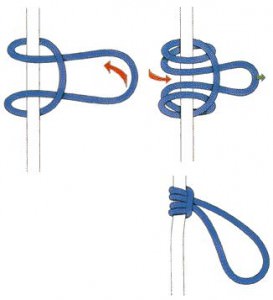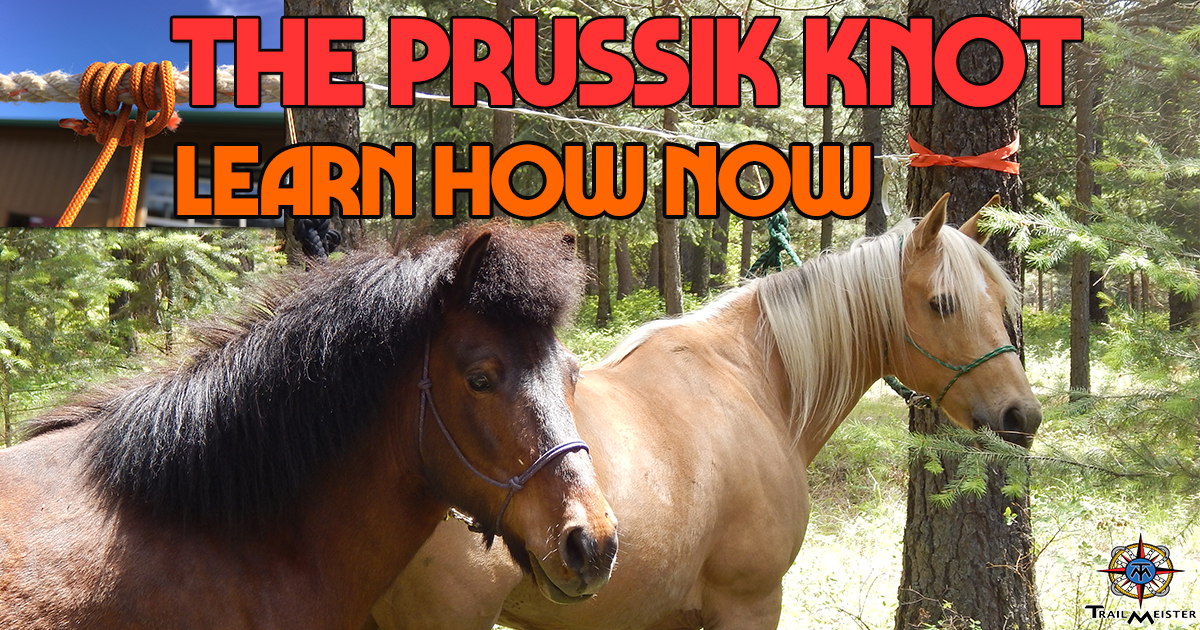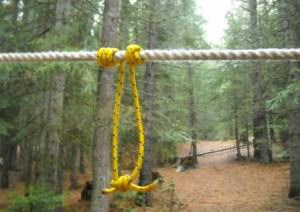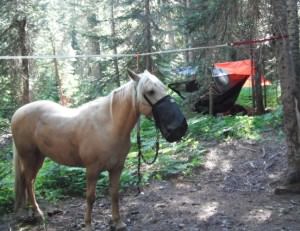The same features that allow the Prusik to used to great effect by climbers in ascending a mountain (i.e. the knot will easily slide to where it is needed and then lock into place) make it perfect for equestrian usage especially when setting up a highline to secure your horses and mules overnight.
A Prusik knot is considered a friction hitch type of knot that is commonly seen and used extensively in the realms of caving, climbing, canyoneering, mountaineering, rope rescue, and by arborists. Anyplace where there is a need for a strong and secure loop that can slide when needed.
For the etymologists reading this, the term Prusik is a name for both the loops of cord and the hitch, and the verb is “to prusik”. The term is used for any friction hitch or device that can grab a rope and is often spelled as Prussik, Prussick or Prussic.
 The basic tying of a Prusik Knot is simple in the extreme:
The basic tying of a Prusik Knot is simple in the extreme:
- Take a piece of cord (small diameter climbing cord works great but so does doubled baling twine or mule tape) formed into a loop.
- Pass the knot around the rope several times inside the loop.
- Make sure the turns lie beside each other and pull the knot tight.
By learning and using the Prusik when setting up a highline you will free yourself from expensive gadgets and save space and weight in your saddle bags.
Pictured below are examples of the Prusik in action




